In the following case I was able to provide a young patient with an aesthetic solution to a failed root canal treatment, without compromising the long-term performance of the tooth.
Initial diagnosis
A 12 year old female patient had been experiencing occasional pain with her LL6 molar ever since it had been filled, and complained that “it did not look like a tooth”. Tests showed that the molar was non-vital, and radiolucency indicated a failing root canal treatment.
The options were discussed with the patient and her parents. I advised against leaving the tooth as it was, because the patient was experiencing intermittent pain. The alternatives were to have non-surgical re-root canal treatment, surgical apicectomy and retrograde root filling, or extraction. It was decided to proceed with root canal re-treatment and subsequent restoration with a direct composite filling, if at all possible.
Treatment stages
At the first treatment appointment, the old filling was removed, revealing suppuration around the three existing gutta percha cones. The disto-lingual canal had not previously been located. Patency was achieved in all four canals, which were then medicated before a provisional dressing and restoration were placed.
At the second appointment, the RCT was completed using F2 master cones and Tubiseal. The restoration was then carried out. Excess cone was removed and the enamel margins were bevelled. The cavity was etched with (A/E) phosphoric acid etch. A glass ionomer restoration was placed over the floor of the pulp chamber, to about 2mm depth. The cavity was treated with two coats of iBond Total Etch bonding agent, each air dried and light cured.
The restoration of the tooth was completed with Venus Pearl (Heraeus Kulzer), using incremental, oblique layering of less than 2mm. Simple stratification was achieved with Opaque Medium Chromatic (OMC) dentine and B1 enamel shades.
The rubber dam was removed. The occlusion was checked in centric and all other excursions. A final post-treatment radiograph was taken which verified obturation of all four canals to ideal length, with no voids.
Choice of material
I have found that Venus Pearl is suitable for anterior or posterior use. The material has a soft, creamy consistency that is easily sculptable allowing users to provide patients with an aesthetic result using a simple, stratified, incremental layering technique. Venus Pearl restorations are flexible under stress and durable. Throughout curing, most of the monomer is polymerised, giving a conversion rate of up to 80 per cent, compared to 60-70 per cent for older materials. These properties lead to higher fracture toughness and greater flexural strength, with less staining over time. Additionally, reduced shrinkage and lower shrinkage stress help decrease the risk of secondary caries.
Patient reaction
At the follow-up appointment, the patient had no pain and was pleased with the appearance of her tooth. The re-treatment avoided the more traumatic extraction option and the patient was absolutely delighted. This has resulted in an increase of family and friends referred to the practice.
On a patient so young, the longer an indirect treatment can be delayed, the better. A predictable, long-lasting direct restoration can be achieved with incremental build up of less than 2mm. This is accomplished by retaining as much enamel and dentine as possible, using modern bonding agents and a rigorous protocol with rubber dam isolation.
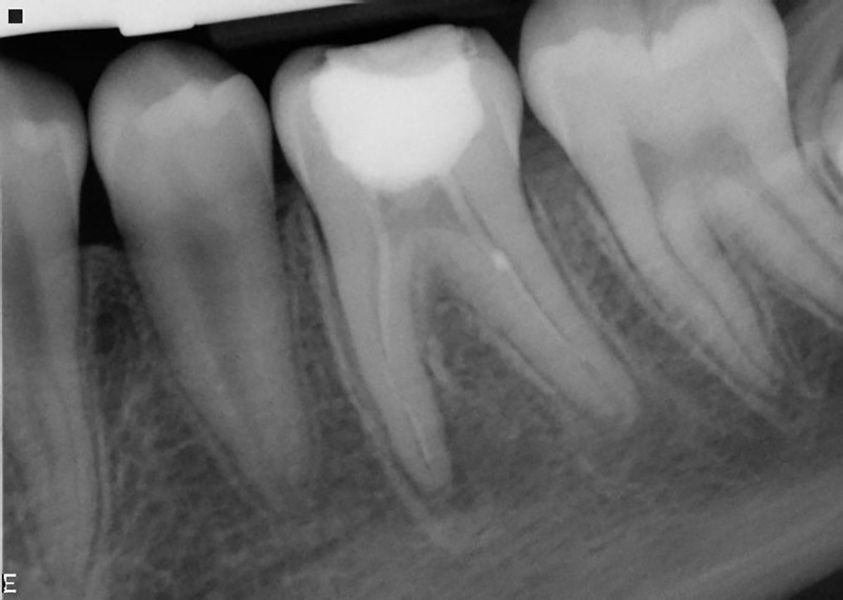
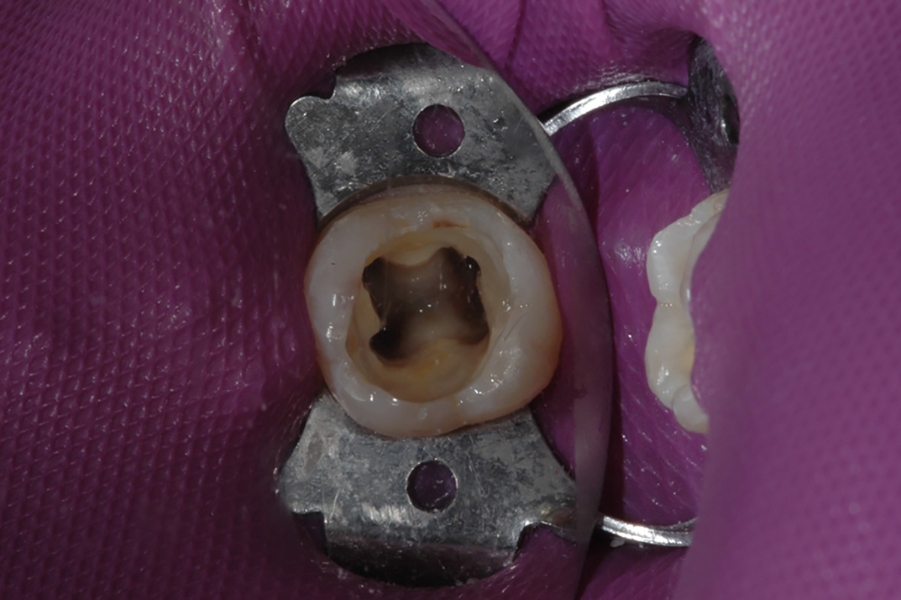
Tests showed that the molar The disto-lingual canal had
was non-vital, and radiolucency not previously been located.
indicated a falling root canal
treatment.
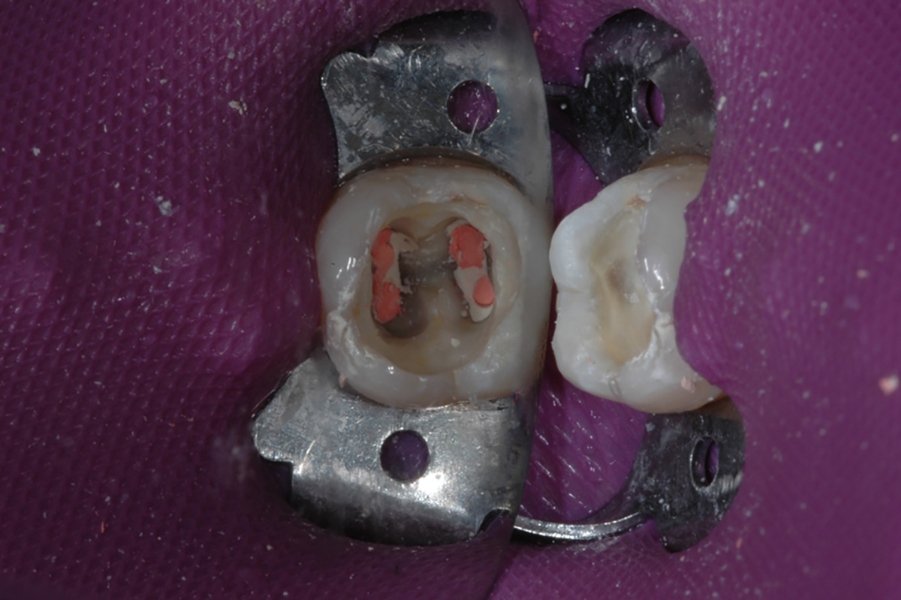
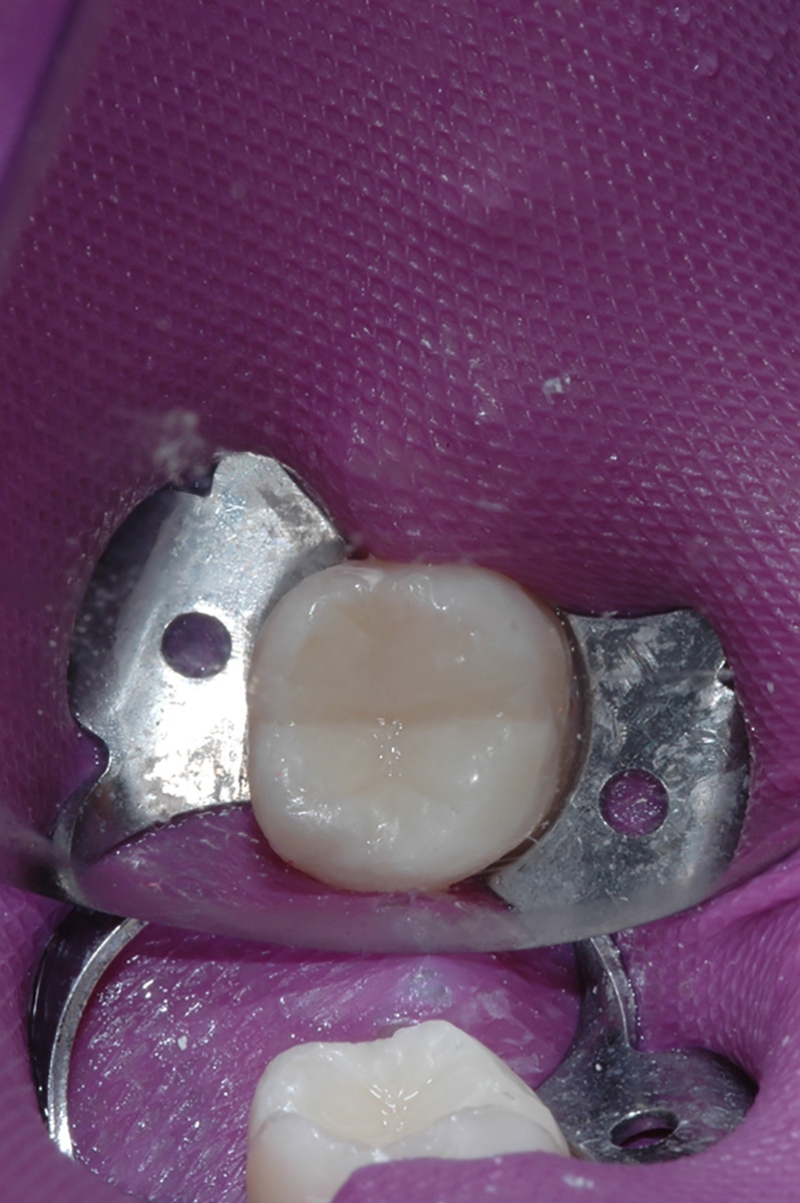
Root canal treatment was Simple stratification
completed using F2 master was achieved with
cones and Tubiseal. Opaque Medium
Chromatic dentine
and B1 enamel shades.
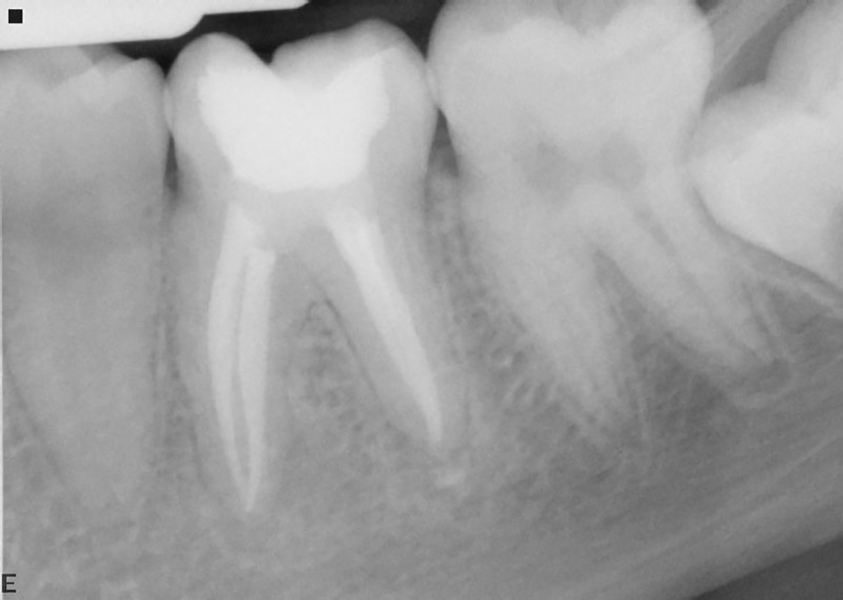
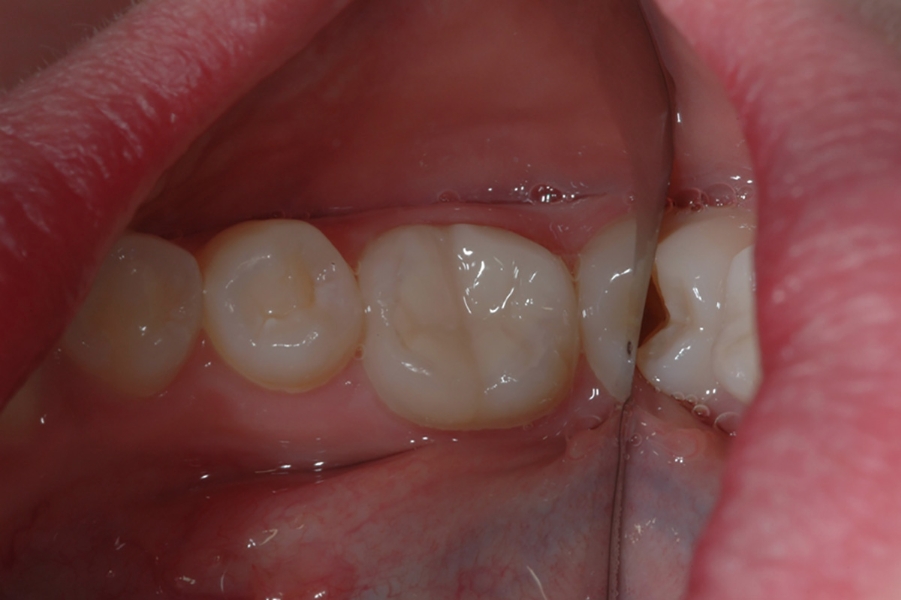
Post treatment radiograph At the follow up appointment,
verified obturation of all four the patient had no pain and was
canals to ideal length with pleased with the appearance of
no voids. her tooth.
